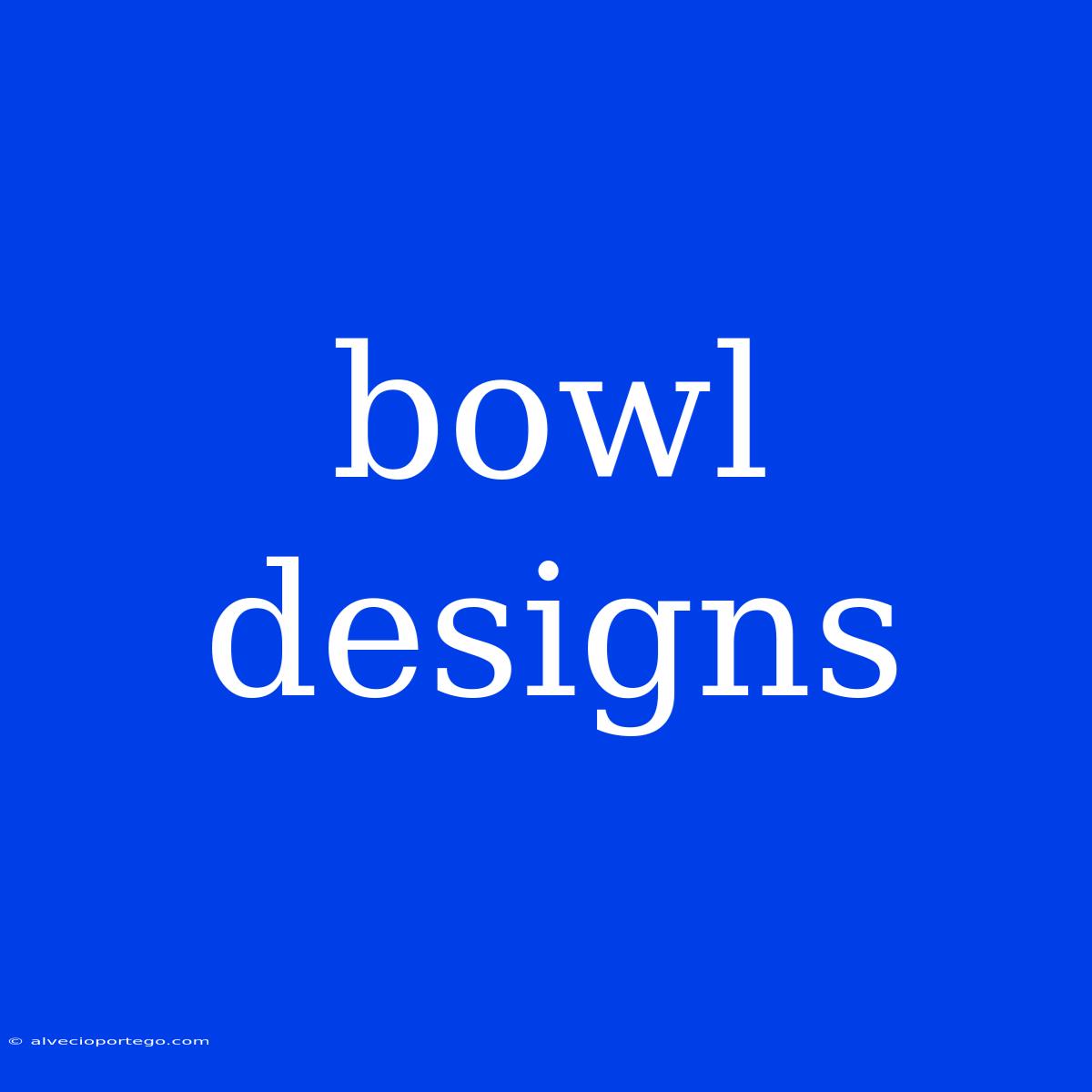A World of Bowls: Exploring Design and Function
Bowls, seemingly simple objects, hold a rich history and a wide array of designs. From humble utilitarian pieces to intricate works of art, bowls have served a multitude of purposes across cultures and time periods.
Beyond the Basics: The Evolution of Bowl Design
Early bowls were often crafted from readily available materials like clay, wood, or stone. These early designs focused primarily on functionality, with simple forms and minimal embellishments. Over time, as craftsmanship developed, bowls became more intricate.
Ancient cultures like the Egyptians, Greeks, and Romans embraced intricate designs, incorporating motifs like geometric patterns, floral designs, and even mythological creatures. The Renaissance saw a resurgence of classical influences, with bowls featuring delicate floral patterns and intricate details.
The Industrial Revolution brought about mass production and new materials like porcelain and glass. This led to a wider availability of bowls and a greater variety of designs, from minimalist to elaborate.
Contemporary bowl designs are incredibly diverse. Modern bowls often embrace minimalism and functionality, with clean lines and simple forms. Others experiment with materials and textures, showcasing innovative techniques and bold aesthetics.
The Art of Form and Function
Form: Bowl designs are influenced by their intended function. For example, soup bowls often have a deep, rounded shape to hold liquids and prevent spills. Salad bowls tend to be wider and shallower to accommodate larger portions. Fruit bowls often have decorative elements and open designs to showcase their contents.
Function: Beyond holding food, bowls are often used for serving, decorating, and even ritualistic purposes. Ceremonial bowls are crafted with exquisite details, often made from precious materials and adorned with religious symbols.
Materials and Techniques
Materials: Bowls can be crafted from an array of materials, each offering unique qualities. Ceramic bowls are known for their durability and versatility. Glass bowls provide transparency and a sleek aesthetic. Metal bowls offer durability and heat resistance. Wood bowls bring warmth and a natural touch.
Techniques: From hand-crafted pottery to mass-produced glassblowing, bowl-making techniques vary greatly. Wheel-thrown pottery allows for intricate forms and details. Slip casting offers a quicker and more efficient process. Glassblowing allows for the creation of delicate and intricate designs.
Exploring the World of Bowl Design
Museums and Galleries: Explore collections of historic and contemporary bowls at museums and galleries worldwide.
Craft Fairs and Markets: Support local artisans and find unique handmade bowls at craft fairs and markets.
Online Platforms: Discover a vast array of bowl designs and materials on online marketplaces and craft websites.
Design Inspiration: Look to nature, architecture, and other forms of art for inspiration in your own bowl design projects.
Experimentation: Don't be afraid to experiment with different materials, techniques, and designs to create your own unique and functional bowls.
Conclusion:
Bowls, humble yet essential, offer a fascinating window into human creativity and cultural history. From ancient times to the present day, they continue to evolve, reflecting our evolving tastes, needs, and artistic expressions. Whether you're a collector, an artist, or simply appreciate beautiful objects, the world of bowl design offers endless exploration and inspiration.

